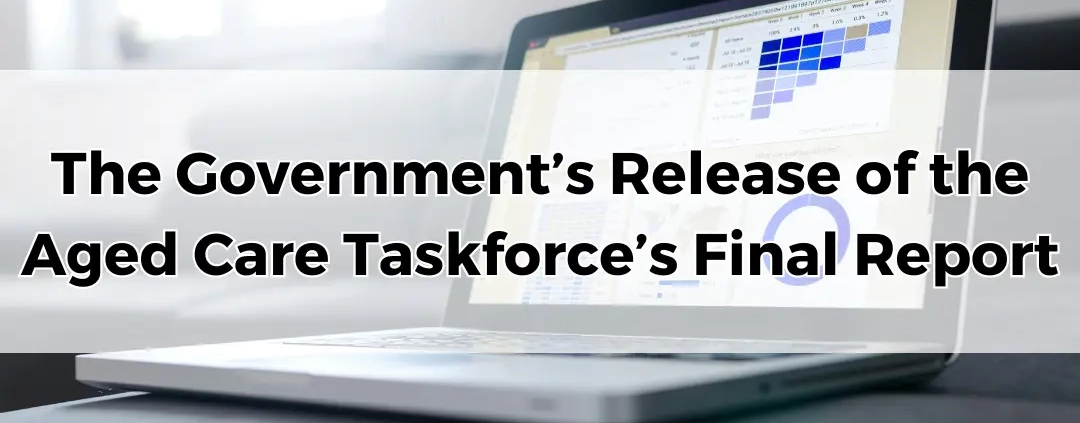The Government’s Release of the Aged Care Taskforce’s Final Report
Table of Contents
ToggleOn Monday, 11 March, the government unveiled the long-anticipated final report from the Aged Care Taskforce, marking a pivotal moment in the ongoing discourse surrounding aged care reform. This document, rich in recommendations and insights, sets the stage for potential transformative changes in the sector. However, it’s crucial to underscore that these are merely the Taskforce’s recommendations; the government’s stance on adopting these suggestions remains forthcoming, with a clear exception: the rejection of funding reforms through increased taxes or a specific levy.
Government's Preliminary Stance
In an initial reaction, the authorities have distinctly opposed the idea of imposing a new tax or levy to finance aged care improvements. Moreover, they have committed to maintaining the current cap on home values, ensuring no additional financial burdens in that area. This cautious approach signals the government’s intent to balance fiscal prudence with the pressing needs of aged care.
High-Level Recommendations Overview
Financial Strategies and User Contributions
The Taskforce advocates for a model that eschews a new tax or levy but calls for heightened user-pay contributions from financially able individuals. This nuanced approach aims to foster a more sustainable aged care ecosystem without overarching tax impositions.
Adjustments to the Refundable Accommodation Deposit (RAD) Cap
A significant proposal is the elevation of the RAD cap from $550,000 to $750,000, aligning with the 2017 Tune Report’s recommendations. This adjustment is envisioned as a step towards rectifying funding limitations, enabling providers to seek higher RADs autonomously, subject to the Independent Health and Aged Care Pricing Authority‘s oversight.
RAD Utilisation and Phasing Out
The suggestion to allow a 3% deduction from the RAD for a bounded timeframe aims to balance the RAD and Daily Accommodation Payment (DAP) interplay. Furthermore, the Taskforce envisions a gradual transition from RADs to a purely rental-based model by 2035, indicating a significant paradigm shift in funding aged care accommodation.
Enhancements in Basic Daily Fees and Supplements
Introducing a supplementary charge to the basic daily fee to offset hotelling costs (like food and utilities) emerges as a key recommendation. This fee could potentially be government-funded for pension-receiving residents, while others might bear the cost directly, emphasising a tailored approach to financial contributions based on individual circumstances.
Flexibility and Quality in Service Fees
The report suggests empowering providers and residents to negotiate enhanced basic daily fees for superior services, alongside advocating for variable fees in Home Care services, reflecting the diversity of services utilised.
Comprehensive Government Funding with User Contributions
A pivotal recommendation is the expansion of government funding to cover care costs fully, with residents contributing more towards accommodation and daily living expenses. The Taskforce hints at the possibility of revisiting the caps on means-tested fees and the lifetime cap, contingent on the government’s decision to not fully fund the care component.
Anticipated Government Response
With the May Federal Budget on the horizon, the government is poised to articulate its response and outline proposed changes, integrating the Taskforce’s recommendations. This forthcoming announcement is eagerly awaited, as it will significantly influence the direction of aged care reform and the sector’s financial structuring.
In essence, the final report from the Aged Care Taskforce presents a complex tapestry of recommendations that seek to balance financial sustainability with the imperative to enhance aged care quality. The government’s deliberative process in responding to these recommendations is a critical juncture in shaping the future of aged care in the nation.









